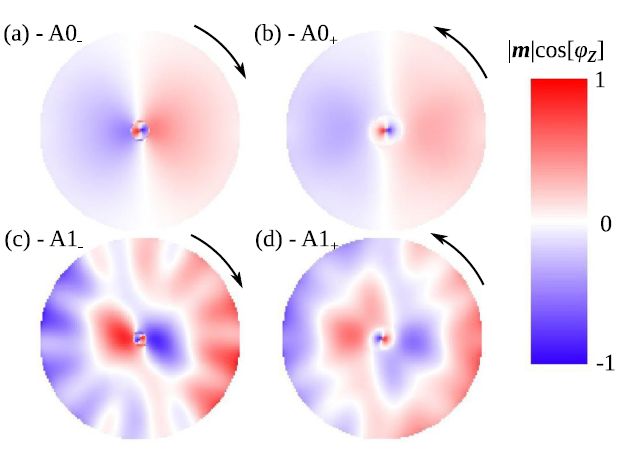R. V. Verba, A. Hierro-Rodriguez, D. Navas, J. Ding, X. M. Liu, A. O. Adeyeye, K. Y. Guslienko, and G. N. Kakazei
Phys. Rev. B 93, 214437 (2016)
We study both experimentally and using micromagnetic simulations how the spin excitation spectra of the vortex-state circular dots made of soft magnetic material change with the dot thickness t in the range t = 20–80 nm. It is found that in addition to higher-order gyrotropic modes which are nonuniform along the dot thickness and were observed earlier, azimuthal spin-wave modes having curled structure at the dot top and bottom faces appear in the spectrum when increasing the dot thickness. For the dot thickness t > 50 nm these “curled” modes become the lowest ones in the spin-wave excitation spectrum. It is also shown that all spin-wave modes with azimuthal index m = ±1 are hybridized with the vortex gyrotropic modes. However, while “common” azimuthal (0,±1) modes are hybridized with the main gyrotropic G0 mode and reveal large frequency splitting of their doublet, the curled modes can be hybridized with higher-order gyrotropic modes and the doublet frequency splitting vanishes with the dot thickness increase.

Fig.1. Azimuthal spin-wave mode profiles in a nanodot having 20 nm thickness.